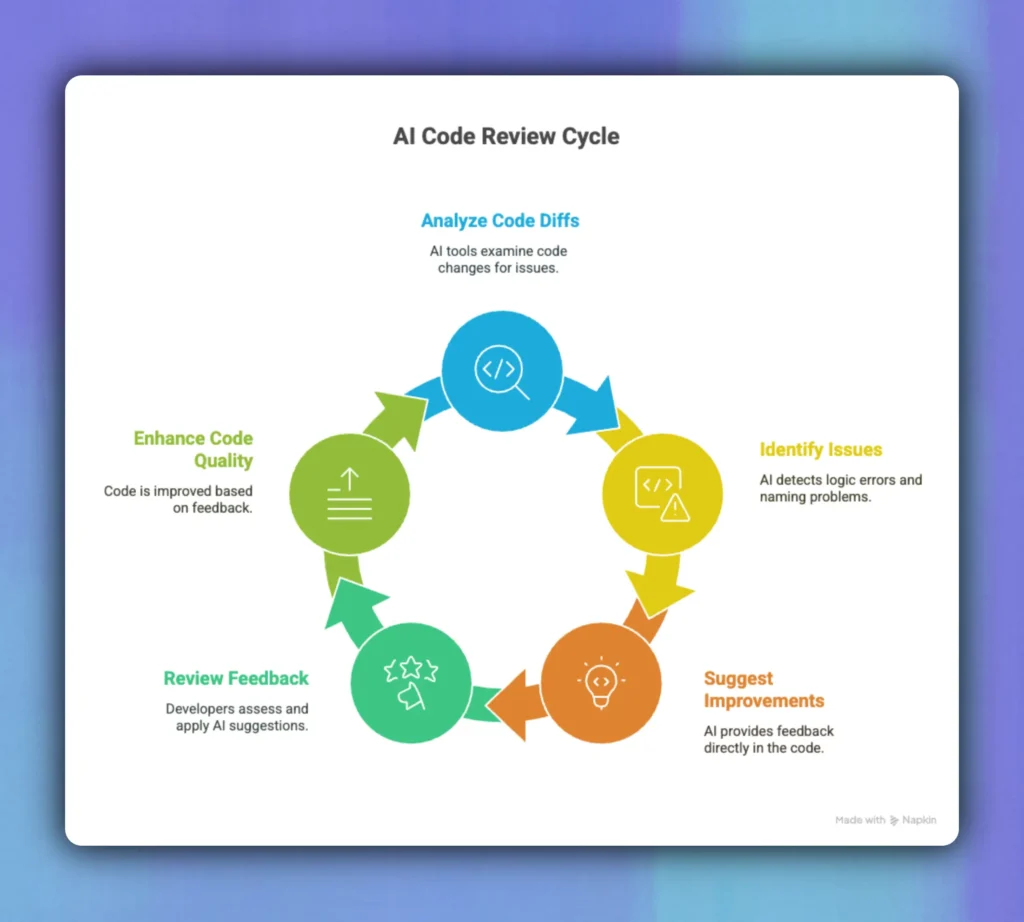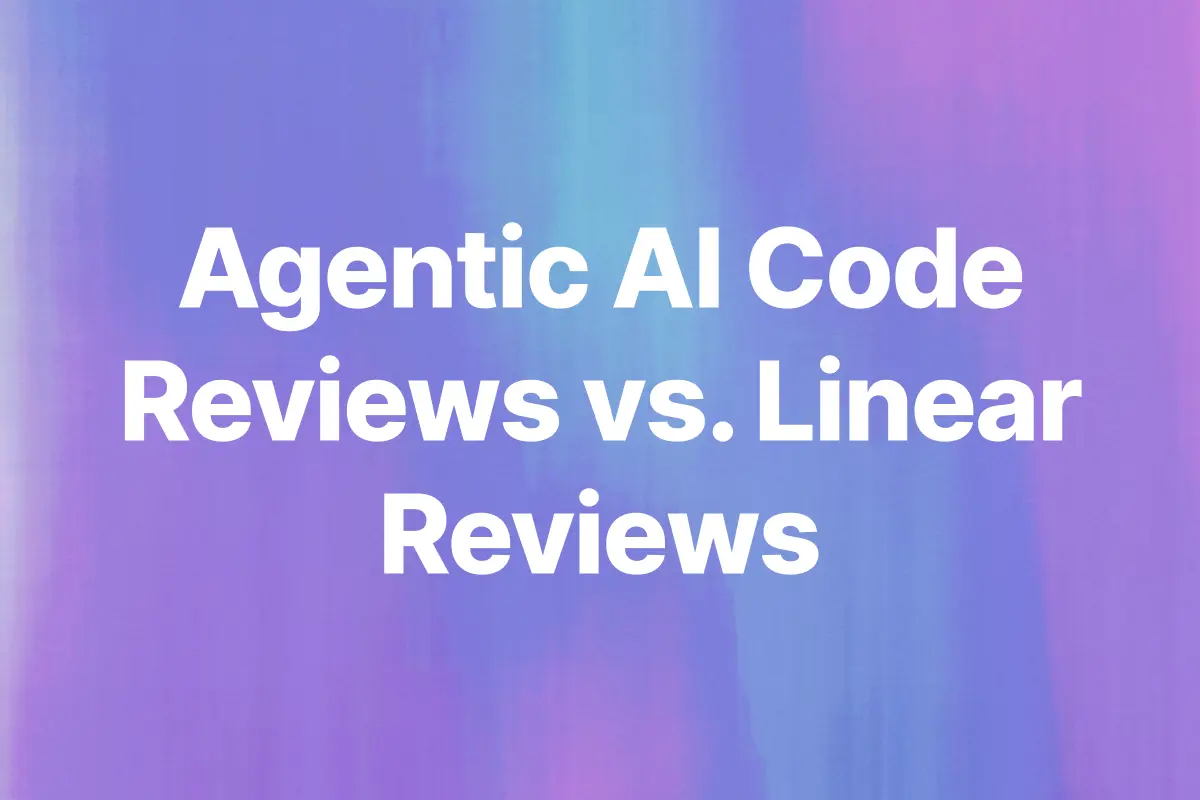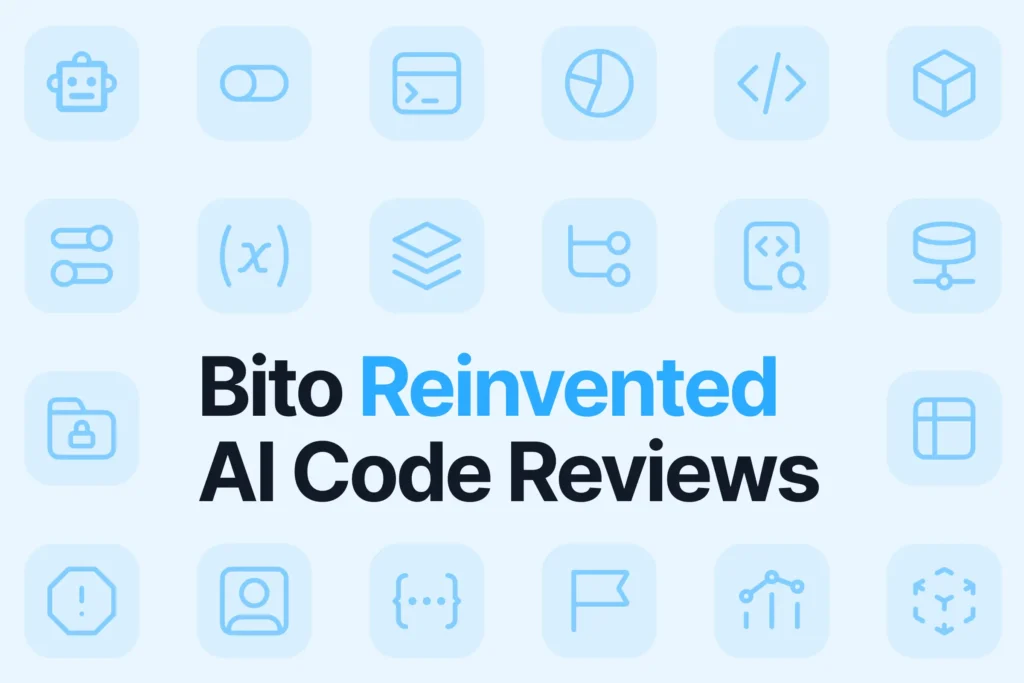Bito recently rolled out a big change: agentic AI code reviews. When I first wrote the update, I figured most people might gloss over it.
It sounds technical, maybe even buzzword-y. But it’s actually a big shift in how AI reviews your code. I’ve seen internally how fast and efficient code reviews get because of it.
Anyway, the idea of this blog comes from the fact that most AI review tools follow a linear chain-of-thought process. They scan your code line by line, check for issues, and drop suggestions.
It works, for sure. But that doesn’t mean you shouldn’t opt for something better. By better, I mean agentic AI reviews!
They explore, reason, and adapt more like a real reviewer. The goal is deeper, dynamic, and more useful feedback that makes sense in context.
Let’s break down what agentic means, how it compares to linear systems, and why this update actually matters if you care about clean, reliable code.
What AI code review tools actually do
AI code review tools look at code diffs and surface possible issues. They scan for logic errors, naming problems, missing validations, poor structure, and other issues.
Some of these tools rely on static analysis rules. Others use large language models trained on examples of clean and broken code. This mix of static analysis and LLM-powered review helps automate code feedback across pull requests in a structured, repeatable way.
The goal is to help teams review faster, catch edge cases, and keep quality high when reviewing pull requests. AI agents suggest improvements right where the changes happen, which saves time compared to manual scanning.
Most tools follow a pattern. They run checks in a predefined order, line by line, often with limited awareness of how code fits together. This is called a linear or sequential system.
This linear system works fine for most of the problems but can miss issues that require understanding code across functions, files, or previous context.
The next section explains both Linear and Agentic system better.

Agentic AI Code Reviews vs Linear Reviews
Most AI code reviewers today fall under one of two systems. The previous section described how they work at a high level.
This section breaks it down further, so you can see how linear reviews compare with agentic reviews in real workflows.
Linear AI code reviews
A linear AI review system works like a checklist engine. It looks at the diff in sequence, applies static rules or LLM prompts on each part, and leaves comments based on what it sees at that step. It does not revisit earlier logic or correlate issues across different files or functions.
This kind of system works best for shallow checks, e.g., naming conventions, formatting, repeated patterns, and small logic fixes. It fits basic automated code review needs but lacks the depth needed for full pull request analysis or dynamic reasoning.
It fails when the issue spans across functions or depends on understanding earlier or external logic.
There is no real reasoning here. Each decision is local. Once it flags or skips a line, the decision is final.
Agentic AI code reviews
Agentic AI review systems follow a dynamic approach. Instead of scanning and dropping comments line by line, the agent forms a review plan based on the entire diff. It decides what parts need closer inspection, what context it needs, and in what order to approach the files.
This includes reading related files, resolving references, and dynamically revisiting logic once more code is understood. It may trace a variable through multiple layers, or compare old and new logic to detect unintended effects.
The agent reasons about the code. It decides when to stop, where to dive deeper, and how to structure feedback in a way that makes sense to a developer reading the pull request.
The result is context-aware, precise, and usually more actionable. This dynamic review process gives developers real-time code understanding and better aligns with how humans approach review automation.
What agentic AI code reviews look like in Bito
The shift to agentic reviews in Bito is a full change in how the AI understands and navigates your codebase, with full context.
Previously, the agent followed a fixed chain of thought: go through the PR, review it, refine it, filter out noise, then drop the comment. That worked really well, but it had limits.
Now the agent takes a more dynamic approach.
1. It identifies context in real time
Instead of sticking to a script, the agent moves around the codebase based on what it finds. If it sees a function call, it can jump to that function. If it spots a variable, it can trace how it’s used across files. This makes the review feel more intentional and complete.
2. It generates and validates feedback as it goes
There’s no rigid flow anymore. The agent forms suggestions, cross-checks them with related code, and only then decides whether to surface a comment. This keeps things relevant and cuts down on noisy or repetitive feedback.
3. It explores your code more freely
The agent isn’t locked to the diff view. It can branch out into supporting files, utility functions, and parent components to understand what’s really happening. That helps it catch deeper issues and give suggestions that actually make sense in the bigger picture.
4. The feedback is tighter and more actionable
You get fewer “maybe rename this” type comments. Instead, the agent explains why a condition is fragile or why an abstraction makes the logic harder to follow. These are the kinds of comments that save you time and lead to cleaner code.
We’ve seen the agent catch logic gaps, misused dependencies, and hidden edge cases that would’ve taken multiple review passes to uncover.
What do I really think about this update
After launching our agentic approach, Bito’s AI Code Review Agent now works like a real-human-dynamic reviewer. The agent no longer follows a fixed script. It explores, inspects, and adapts as it goes.
If a bug depends on a variable introduced two files earlier, the agent tracks it. If an abstraction increases complexity, it points that out. This is what makes AI code reviews feel more thorough.
I had an open PR where I ran Bito a few weeks ago. Just to try out the agentic approach, I re-reviewed that pull request yesterday and the change in suggestions, approach, quality was visible.
Look at this pull request. The first review from 3 weeks ago is Bito’s chain-of-thought approach and the one dated ‘yesterday’ is Bito’s agentic approach.
Final thoughts
This agentic AI code review system fits naturally into existing developer workflows and CI environments without needing separate review tooling.
For developers working on real production code, that difference matters. Your pull requests often touch multiple layers, reference utilities, and handle edge cases. Static rule-checking or single-pass reviews miss a lot of that.
Bito’s agentic approach covers more ground without requiring extra setup.
You do not need to switch tools or learn a new process. The agent lives in your pull request. You keep working the way you already do, and the agent adds value where it counts: line comments that carry context.
Well again, you don’t have to take my word for it.
Sign up at bito.ai, connect your repo, and run a review. You will see how the agentic approach to AI code reviews works.






